
USAT Brigadier General M. G. Zalinski was a U.S. Army transport ship that served in World War II. It sank in 1946 in the Grenville Channel in British Columbia's Inside Passage. The crew were rescued by a tug boat and the SS Catala passenger steamer, but the cargo of bombs and oil went down with the ship.

The Grand Trunk steamship Prince Rupert and her sister ship SS Prince George served the coast of British Columbia and Alaska. Prince Rupert had a 45-year career serving northern ports from Vancouver, British Columbia, from 1910 to 1955. The ship was considered "unlucky" and suffered several incidents during her career, including two significant ones that left large portions of the vessel underwater. The ship was broken up in 1956.
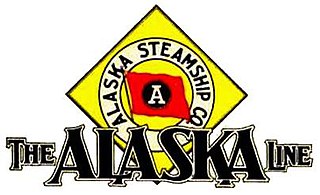
The Alaska Steamship Company was formed on August 3, 1894. While it originally set out to ship passengers and fishing products, the Alaska Steamship Company began shipping mining equipment, dog sleds, and cattle at the outbreak of the Klondike Gold Rush of 1897. The company was purchased by the Alaska Syndicate and merged with the Northwestern Steamship Company in 1909, but retained its name, and the fleet was expanded to 18 ships. During World War II, the government took over the company's ships. When the war ended, the company struggled to compete with the new Alaska Highway for passengers and freight. It discontinued passenger service altogether in 1954 and shut down operations in 1971.
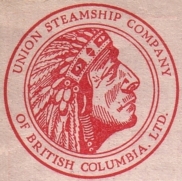
The Union Steamship Company of British Columbia was a pioneer firm on coastal British Columbia. It was founded in November 1889 by John Darling, a director of the Union Steamship Company of New Zealand, and nine local businessmen. The company began by offering local service on Burrard Inlet near Vancouver and later expanded to servicing the entire British Columbia coast.
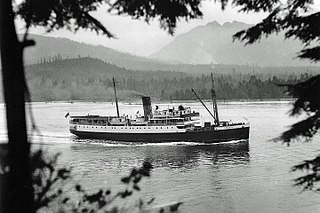
For more than 35 years, from 1923 to 1958, the Union steamship Cardena sailed the British Columbia Coast, carrying passengers, groceries, dry goods, industrial cargo, mail and sundry other supplies to the 200 or so mining, logging and fishing communities that once dotted the province's coastline during the early years of the 20th century. On her return voyage, at the peak of the summer fishing season, Cardena routinely carried thousands of cases of canned salmon to the railheads at Prince Rupert and Vancouver for shipment across Canada and around the world. And so it went for the better part of half a century; a regular and reliable marine service that made Cardena a coastal institution, remembered with affection and regard by the countless men, women and children who inhabited those tiny outports in a bygone era.

The SS Princess Kathleen was a passenger and freight steamship owned and operated by Canadian Pacific Steamships. She served the coastal communities of British Columbia, Alaska and Washington.

Capilano was a steamship built in 1920 in British Columbia, which served until 1949.

Comox was a steamship built in 1891 in British Columbia which served until 1920. Comox was the first steel ship built on the west coast of North America north of San Francisco.

Cutch was a steamship built in 1884 in Hull, England. The ship served as a pilgrimage vessel and a yacht in India from 1884 to 1890, then as a steamship in British Columbia from 1890 to 1900 under the ownership of the Union Steamship Company. The ship was wrecked in August 1900, then salvaged and registered in the United States as Jessie Banning. In 1902 the ship was transferred to the navy of Colombia where it was armed with cannon and served in the Colombian navy as the gunboat Bogota. Bogota shelled the city of Panama on November 3, 1903 during the secession of Panama from Colombia.

Lady Alexandra was a steamship built in 1924 in Montrose, Scotland which served in British Columbia from 1924 to 1952, mostly on Howe Sound.

Cheslakee was a steamship that operated from 1910 to 1913 under the ownership of the Union Steamship Company of British Columbia. In 1913, the ship sank, killing seven people. This was the only accident involving a passenger fatality in the 70-year history (1889-1959) of the Union Steamship Company. Following the sinking Cheslakee was raised, reconstructed, and launched again under a different name.

Cowichan was a steamship which was operated in British Columbia under the ownership of the Union Steamship Company. Cowichan sank in 1925 following a collision with another ship.

Princess Marguerite, Princess Marguerite II, and Princess Marguerite III was a series of Canadian coastal passenger vessels that operated along the west coast of British Columbia and into Puget Sound in Washington state almost continuously from 1925 to 1999. Known locally as "the Maggie", they saw the longest service of any vessel that carried passengers and freight between Victoria, Vancouver, and Seattle. The vessels were owned and operated by a series of companies, primarily Canadian Pacific Railway Company (CPSS) and British Columbia Steamships Corporation. The first two were part of the CPR "Princess fleet," which was composed of ships having names which began with the title "Princess". These were named after Marguerite Kathleen Shaughnessy, who was not a princess but was the daughter of Baron Thomas Shaughnessy, then chairman of the board of CPSS's parent, the Canadian Pacific Railway (CPR).
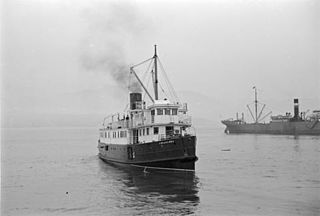
Cheakamus was a steamship built in 1913 in North Vancouver, British Columbia. This ship was originally built as the Cheslakee in Scotland. After Cheslakee capsized in 1913, the hulk was raised, lengthened, and placed back into service as Cheakamus.

Camosun was a steamship built in 1904 in Paisley, Scotland, which served in British Columbia.
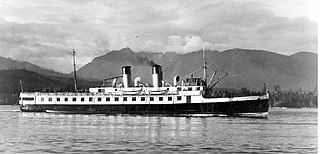
Lady Cynthia was a steel-hulled passenger ship converted from a minesweeper,, which served in the coastal waters of British Columbia from 1925 to 1957. Lady Cynthia was a sistership to Lady Cecilia, also a converted minesweeper. The ship was generally referred to as the Cynthia while in service.

Chelosin was a steel-hulled, steam-powered passenger-freighter vessel that served in coastal British Columbia from 1911 to 1949, under the ownership of the Union Steamship Company of British Columbia.

Chasina was an iron-hulled, steam-powered ship, originally built as a steam yacht, but later converted to a passenger-freighter vessel that served in coastal British Columbia and other areas during the early decades of the 1900s under the ownership several different companies. The ship disappeared in 1931 after leaving Hong Kong.
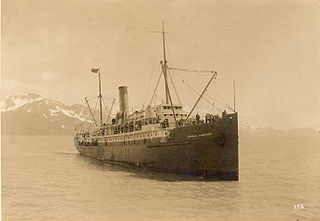
The SS Admiral Sampson was a U.S.-flagged cargo and passenger steamship that served three owners between 1898 and 1914, when it was rammed by a Canadian passenger liner and sank in Puget Sound. Following its sinking off Point No Point, the Admiral Sampson has become a notable scuba diving destination for advanced recreational divers certified to use rebreathing equipment.

SS Miowera was a passenger and refrigerated cargo liner that was launched in 1892 in England for Australian owners, and was later owned by two of New Zealand's foremost shipping companies. In 1908 her last owners renamed her Maitai. She was wrecked on a reef in the Cook Islands in 1916.






















